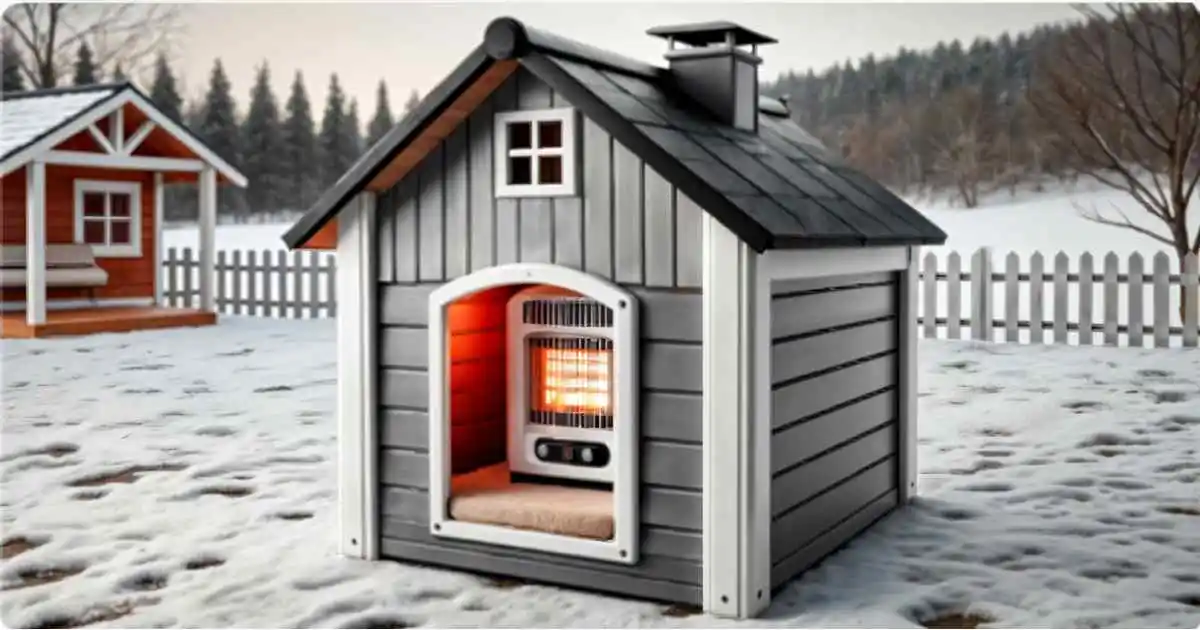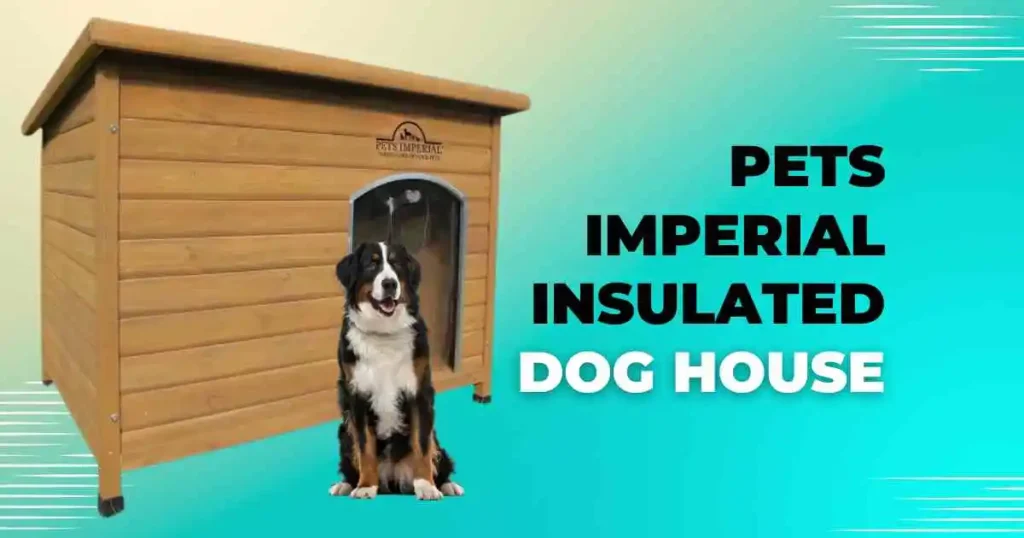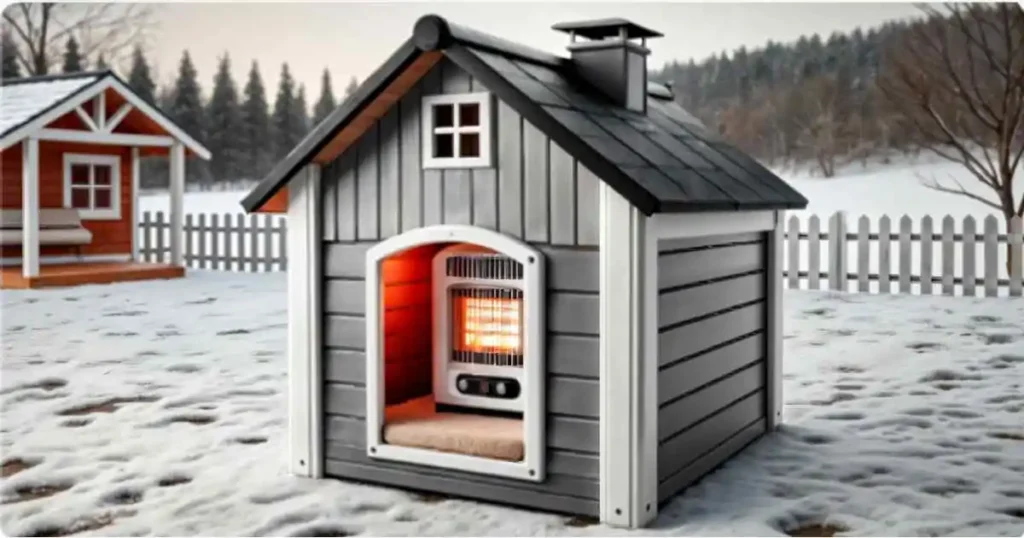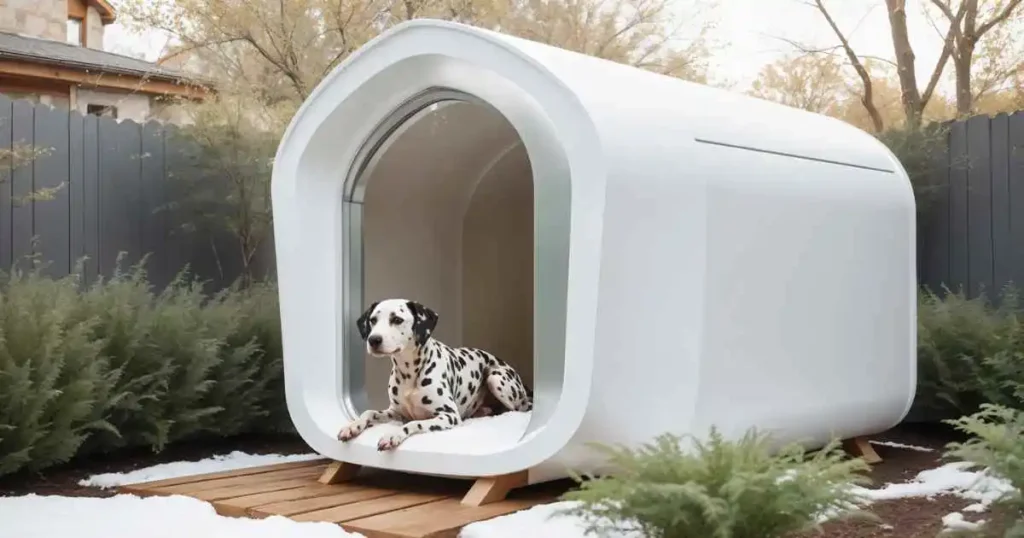Insulated dog houses are designed to maintain a stable internal temperature by limiting heat loss, but adding heated elements provides several key benefits that improve their effectiveness. Heated elements offer an additional source of warmth in extremely cold climates.
In regions with exceptionally cold temperatures, insulation alone might not provide enough warmth. Hence, adding heated elements provides a supplementary heat source so that your pup stays warm even on the coldest nights.
Additionally, an insulated dog house with a heater is particularly beneficial for older dogs or those with health issues.
This detailed guide will explore the importance of an insulated dog house with a heater and its functioning, available heating equipment, their pros and cons, and safety measures to be taken while handling this equipment.
- Main Elements of an Insulated Dog house with heater
- Top Heating Options for Insulated Dog Houses
- 1. Electric heating pads:
- 2. Microwavable Heating Pads:
- 3. Adjustable Electric Heaters
- 4. Self-Heating Pads
- 5. Heated dog bed
- 6. Heat Lamps
- 7. Insulated Dog Houses with Built-in Heating
- 8. Portable Space Heaters
- Potential Drawbacks of Heated Dog Houses with Heater
- Conclusion:
Main Elements of an Insulated Dog house with heater
Insulation:
The walls, floor, and roof of the insulated dog house are often lined with insulating materials like foam, fiberglass, or reflective thermal barriers. This covering traps warmth inside while keeping off icy winds, thus maintaining an even temperature throughout.
Heater:
The installed heater supplies extra heat, especially needed in freezing temperatures. Electric, infrared, or heated pads can be used for heating, with many of them having thermostats to control temperatures, preventing overheating the pet.
Weatherproof Construction:
These houses are usually made from heavy-duty plastics, wood, or metals that can withstand various climatic conditions.
Top Heating Options for Insulated Dog Houses
Several ways can be used to circulate heat within an outdoor shelter meant for canines only.
1. Electric heating pads:
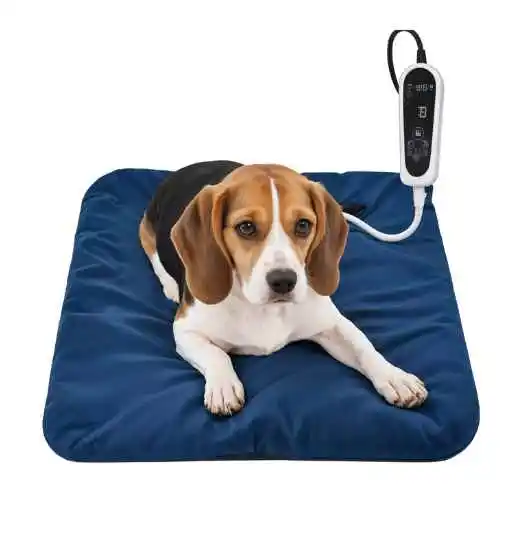
These devices are typically equipped with adjustable thermostats that allow the pet owner to control the temperature according to the prevailing weather conditions within an area.
They are placed beneath mats where animals sleep most frequently, and the warmth produced is distributed uniformly all over their bodies.
Make sure the devices you purchase have chew-resistant cords and additional safety measures like an automatic shut-off if tipped over or overheated. Made from top-notch materials, they last long, are easy to install, and easy to clean. They normally come with a one-year warranty.
pros:
Different temperatures can be set according to the breed of each dog.
Cons:
It is expensive and complicated to install. The risk of electrical hazards and regular maintenance should be considered.
Recommendation:
K&H Pet Products Heated Lectro-Kennel Outdoor Dog Pad
2. Microwavable Heating Pads:

They are heated using microwave ovens, keeping to the heating time specified by their manufacturer, which is usually a few seconds or minutes.
Then, it is placed under bedding material like straw so as to provide warmth for many consecutive hours. They do not offer adjustable settings and have no energy consumption after the initial microwave use.
.
These pads are safe, with no cords or electricity required, reusable, and long-lasting. They are easy to install and require no maintenance. Additionally, due to their portability, they can be easily carried around. Normally, they come with a one-year warranty.
Pros:
They are safe and can be reused.
Cons:
Need regular heating.
Recommendation:
The ‘Original’ Snugglesafe Microwave Heating Pad Disc Microwavable Heated Pet Bed
3. Adjustable Electric Heaters
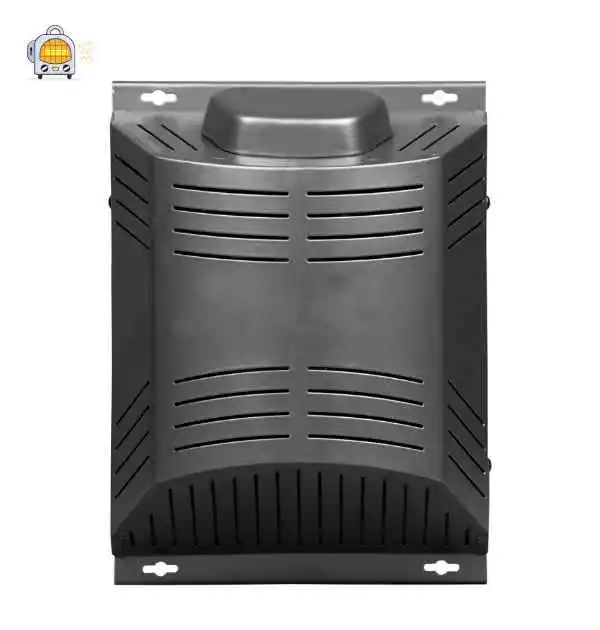
These electric heaters can either be floor-standing or wall-mounted. They offer multiple heat settings, allowing one to vary their warmth depending on their preference.
Energy consumption ranges between 200 – 300 watts. Safety features include auto shut-off when not in use and an overheat protection mechanism.
They are strong enough to be durable and easy to set up. Minimal maintenance is needed, making them suitable for different sizes of dog houses. They usually come with a one-year warranty.
Pros:
Flexible levels of heat output are available, and the installation method is simple.
Cons:
Higher electricity usage is required than other methods. One must be cautious when placing it near flammable materials so as not to cause a fire accident.
Recommendation:
Climate-Right 300W Electric Dog House Heater
4. Self-Heating Pads

Self-heating pads utilize a dog’s body heat to generate and reflect warmth. No electrical power is needed. They do not offer adjustable settings, nor do they consume any energy at all. These pads are extremely secure since there is no risk of getting shocked by electric current.
In addition, they can last for many years without showing signs of damage. Making them cost-effective over time. Installation is pretty simple. Usually sold with a one-year warranty.
Pros:
Safe and portable.
Cons:
It may include less effectiveness during extremely cold seasons.
Recommendation:
Furhaven Waterproof & Self-Warming Throw Blanket for Dogs
5. Heated dog bed
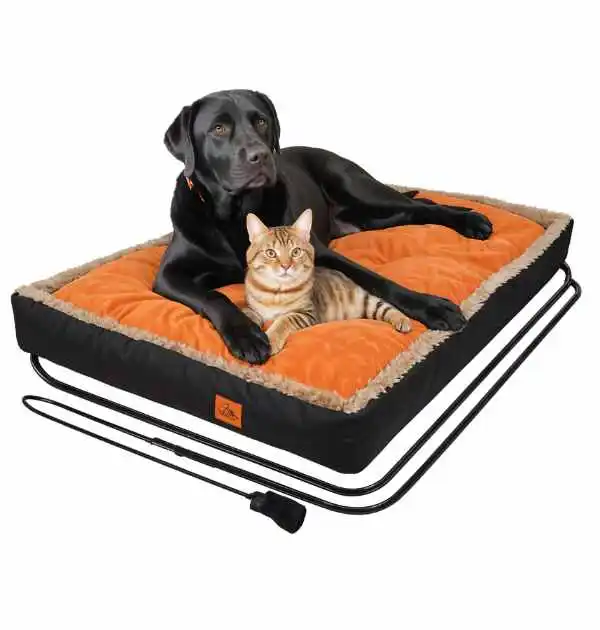
Designed for outdoor use, heated dog beds often come with adjustable heat settings. They offer moderate energy efficiency, ranging from 20 to 60 watts on average. The cord is chew-resistant and has an automatic shut-off capability.
These beds are durable as they are made using high-quality materials. Furthermore, it can fit into any dog house. Most models should come backed by a one-year warranty.
Pros:
Comfortable and easy to use.
Cons:
It needs electricity and cannot be used when the floor is wet.
Recommendation:
Upgraded Heated Dog Bed with Enlarged Heating Area
6. Heat Lamps
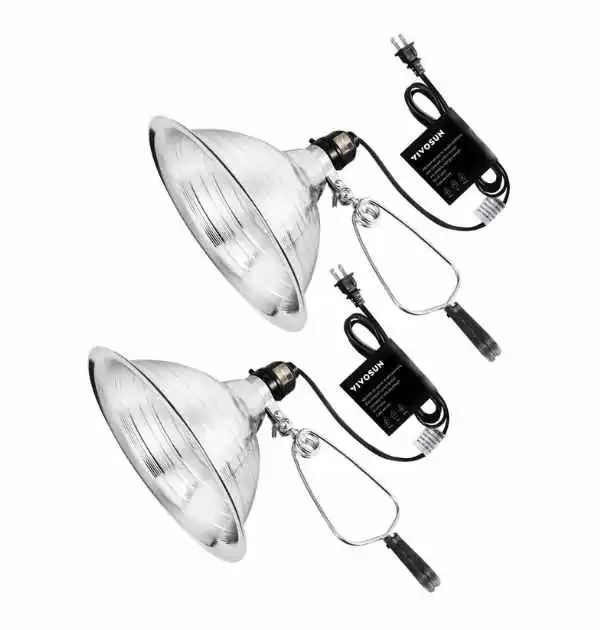
The lamps give direct heat and are equipped with adjustable angles and intensities. They are energy efficient, consuming around 100–250 watts. To avoid fire hazards, make sure the lamps are positioned correctly. They’re durable and simple to set up and install.
In addition, you should consider heaters that have built-in thermostats to aid in controlling the temperature and increase efficiency in energy use. Regular monitoring and maintenance are crucial to ensuring the security and efficiency of the heating lamp system.
Pros:
Effective targeted heating and ease of installation.
Cons:
A fire hazard may occur if not used properly.
Recommendation:
7. Insulated Dog Houses with Built-in Heating
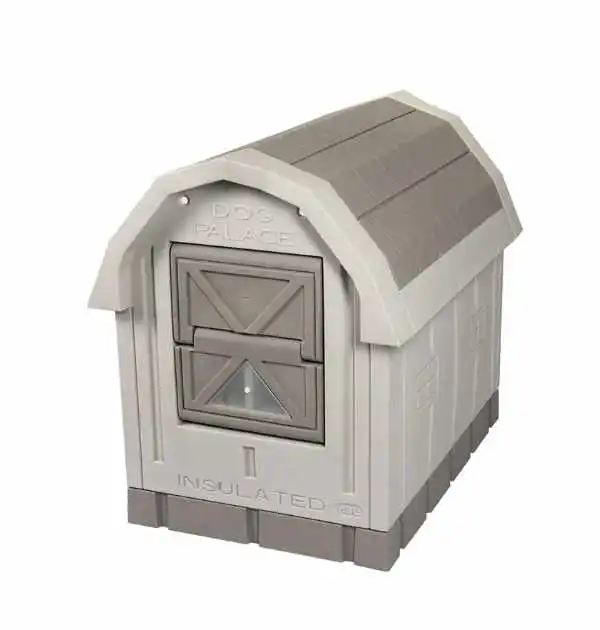
These dog houses have built-in heating systems that are well-insulated for maximum heat retention. They come with thermostat-controlled heat settings, and their efficiency ranges from medium to high, depending on the system used.
The safety features incorporated into these units ensure safe operation throughout their life span. Minimal maintenance is required. This kind of house performs better in any weather condition. It typically comes with a two-year warranty.
Pros:
It is a complete solution and energy efficient due to insulation.
Cons:
Expensive and complex setup.
Recommendation:
ASL Solutions Deluxe Insulated Dog Palace with Floor Heater.
8. Portable Space Heaters
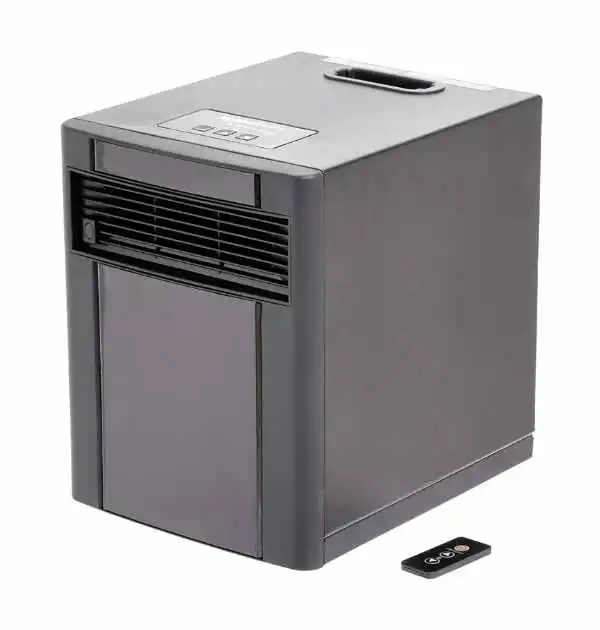
Portable space heaters offer incredible power, consuming only 500–1500 watts on average and featuring several safety features such as automatic shut-off buttons and overheat protection systems.
However, it should be handled carefully so as not to break them. They’re ideal for large dog houses but can only be used indoors.
Amazon Basics Portable Eco-Smart Space Heater
Potential Drawbacks of Heated Dog Houses with Heater
Of all the advantages, heated dog houses also come with a few potential drawbacks. Understanding these downsides is important so that one can make an informed decision about what will be best for their furry friend.
1. Expense :
Heated dog houses themselves, along with any necessary heating elements, can be quite costly. Advanced models tend to be of higher quality and, therefore, more expensive. Maintenance costs may also rise as appliances like thermostats or heating pads wear out over time.
2. Safety Concerns
If electrical heating elements are not used properly, they can pose a fire risk. So, make sure you pick appliances that have automatic shut-offs and overheating protection features. Also, some dogs tend to chew electrical cords. Go for chew-resistant cords and ensure proper cord management.
3. Maintenance
The heating elements within heated dog houses need checking regularly, both for correct operation and safety reasons. Look out for signs of wear or tear, and make sure that the insulation remains intact.
4. Dependency on Electricity
An insulated dog house with a heater needs a stable power supply. So, areas prone to regular blackouts coupled with unreliable electric current supplies might find it difficult to benefit from these appliances. On the other hand, electricity bills are likely going to rise if electric heaters or pads are used. Some models are energy efficient, but they still add up over time.
5. Health Concerns
Lack of proper temperature control increases the risk of overheating. This may cause dehydration or heat stress in dogs. Some breeds tend to respond more strongly than others to changes in environmental warmth. Regular monitoring of temperature is of utmost importance.
6. Installation Challenges
Professional assistance may be required to set up forced-air heater systems and solar panels. Poor fitting of heating elements into small kennels may pose serious safety hazards, especially where there’s limited space available within these structures meant for accommodating our canine friends comfortably during the winter months.
Conclusion:
When it comes down to finding a suitable means of warming your pet’s house, factors like how cold it gets outside, what you can afford, and whether or not it poses any danger should all play a part in determining which option would work best. Each appliance has its own merits and demerits. Hence, one must select the most appropriate one, depending on the specific needs of one’s furry friends.
